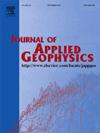Tensor ratio small subdomain filtering technique for edge detection
IF 2.2
3区 地球科学
Q2 GEOSCIENCES, MULTIDISCIPLINARY
引用次数: 0
Abstract
Edge detection is an important processing method for potential field data, used to determine the horizontal location of the edges of causative sources. We proposed an edge detection filtering based on a gradient tensor ratio and improved the small subdomain filtering technique, and merged them into a tensor ratio small subdomain filtering technique. The proposed detection filter utilizes numerical differentiation and Laplace equation to compute gradient tensors. To weaken the interference of random noise on the small subdomain filtering and the irregular bending of contour lines in its result, we replace the original data at the center with a weighted average of the data within the window, where the weighting factors are determined by the distance of each data point to the center point and the standard deviation between equidistant data points. Final filtering output is the weighted average of the data within the subdomain that has the minimum standard deviation, wherein tighten gradient belts are utilized as indicators for detecting the edges of causative sources. Test results on synthetic data show that the proposed method has higher detection accuracy and stability compared to previous methods, and can enhance local anomalies. We also apply them to a real gravity data, and the obtain results indicate that the proposed method can effectively detect fault locations and highlight the residual density characteristics of causative sources.
张量比小子域滤波边缘检测技术
边缘检测是位场数据处理的一种重要方法,用于确定诱发源边缘的水平位置。提出了一种基于梯度张量比的边缘检测滤波和改进的小子域滤波技术,并将它们合并为一种张量比小子域滤波技术。该检测滤波器利用数值微分和拉普拉斯方程计算梯度张量。为了减弱随机噪声对小子域滤波的干扰以及滤波结果中轮廓线的不规则弯曲,我们将中心的原始数据替换为窗口内数据的加权平均,其中加权系数由每个数据点到中心点的距离和等距数据点之间的标准差决定。最后的滤波输出是标准差最小的子域内数据的加权平均,其中利用收紧梯度带作为检测致源边缘的指标。在综合数据上的测试结果表明,与现有方法相比,该方法具有更高的检测精度和稳定性,能够增强局部异常。将该方法应用于实际重力数据,结果表明,该方法能够有效地检测出故障位置,并突出了诱发源的剩余密度特征。
本文章由计算机程序翻译,如有差异,请以英文原文为准。
求助全文
约1分钟内获得全文
求助全文
来源期刊

Journal of Applied Geophysics
地学-地球科学综合
CiteScore
3.60
自引率
10.00%
发文量
274
审稿时长
4 months
期刊介绍:
The Journal of Applied Geophysics with its key objective of responding to pertinent and timely needs, places particular emphasis on methodological developments and innovative applications of geophysical techniques for addressing environmental, engineering, and hydrological problems. Related topical research in exploration geophysics and in soil and rock physics is also covered by the Journal of Applied Geophysics.
 求助内容:
求助内容: 应助结果提醒方式:
应助结果提醒方式:


